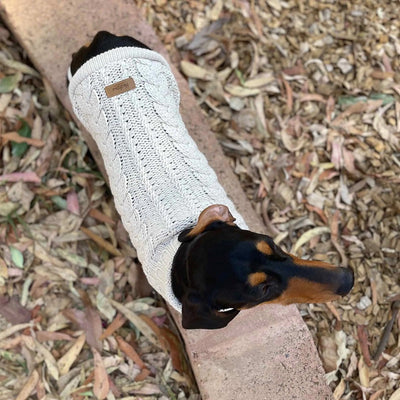
Are you ready to take your bond with your feathered friend to new heights? Training your bird can be an incredibly rewarding and enjoyable experience, and in this article, we will guide you through a step-by-step approach to help you train your feathered companion. Whether you have a parrot, canary, or budgie, this comprehensive guide will provide you with valuable tips and techniques to strengthen the trust between you and your avian companion.
With patience, consistency, and positive reinforcement, you'll be amazed at the progress your bird can make. From teaching basic commands, such as "step up" and "stay," to more advanced tricks like flying to your shoulder or retrieving objects, this step-by-step approach will ensure that your training sessions are effective, enjoyable, and stress-free for both you and your bird.
Remember, building a strong and trusting relationship with your feathered companion is the foundation for successful training. So, grab some treats, have an open mind, and get ready to embark on an exciting training journey with your beloved feathered friend.
The importance of training your feathered companion
Training your bird is not just about teaching them to perform tricks or follow commands. It is a crucial aspect of their overall well-being and happiness. Birds are highly intelligent creatures that thrive on mental stimulation and social interaction. Training provides them with the mental and physical exercise they need to stay healthy and engaged.
commands. It is a crucial aspect of their overall well-being and happiness. Birds are highly intelligent creatures that thrive on mental stimulation and social interaction. Training provides them with the mental and physical exercise they need to stay healthy and engaged.
Furthermore, by training your companion bird, you are establishing a bond of trust and mutual respect. This bond will lay the foundation for a strong and lasting relationship, enhancing your bird's quality of life and ensuring they feel secure and loved in their environment.
Understanding bird behaviour and communication
Before diving into training techniques, it is essential to have a basic understanding of bird behaviour and communication. Birds communicate through a combination of vocalisations, body language, and instinctual behaviours. By observing and interpreting these signals, you can better understand your bird's needs and emotions.
For example, certain vocalisations, such as chirping or squawking, can indicate happiness, excitement, or a desire for attention. On the other hand, aggressive postures, such as fluffed feathers or raised wings, may signal fear, discomfort, or territoriality. By familiarising yourself with these behaviours, you can respond appropriately and effectively during training sessions.
Basic training techniques for birds
Now that you have some understanding of bird behaviour, it's time to delve into the step-by-step training process. It is important to note that some pets birds will be easier to train than others. In our experience, budgies, conures and cockatiels are relatively easy to train. Hand raised birds will also be much easier to train too. The following techniques will help you establish trust, teach essential commands, and address any behavioural issues that may arise.
Step 1: Establishing Trust and Building a Bond
The first step in training your feathered companion is to establish trust and build a bond. This process requires patience, consistency, and a calm, gentle approach. Start by spending quality time with your bird, allowing them to explore their surroundings and become comfortable in your presence.
During this initial stage, avoid any sudden movements or loud noises that may startle your bird. Instead, speak softly and offer treats as positive reinforcement for calm behaviour. Gradually introduce your hand into their space, allowing them to approach and investigate at their own pace. This will help them associate your hand with positive experiences and begin to trust your presence.
Step 2: Teaching Essential Commands and Behaviours
Once you have established trust, you can begin teaching essential commands and behaviours. Start with basic commands like "step up" and "stay." These commands will not only make everyday interactions easier but also serve as the foundation for more advanced training.
To teach the "step up" command, gently press your finger or a perch against your bird's lower chest while saying the command. When they step onto your finger, praise them and offer a treat. Repeat this process several times a day until they respond consistently.
Similarly, to teach the "stay" command, ask your bird to step up onto your finger and then place your other hand in front of them, palm facing towards them, and say "stay." Gradually increase the duration of the stay before offering praise and rewards. Remember to keep training sessions short and end on a positive note to maintain your bird's interest and enthusiasm.
Step 3: Problem-Solving and Addressing Behavioural Issues
Training your feathered companion may come with its fair share of challenges. Birds, like any other animal, may exhibit unwanted behaviours or develop behavioural issues. It is essential to address these issues promptly and effectively to maintain a harmonious relationship with your bird.
For example, if your bird starts biting during training sessions, it is crucial to identify
the underlying cause. Biting can be a sign of fear, aggression, or frustration. By observing their body language and the context in which the biting occurs, you can gain insight into their motivations. Once you have identified the cause, you can modify your training approach or seek professional advice if needed.
Remember, consistency and positive reinforcement are key when addressing behavioural issues. Punishment or negative reinforcement can lead to fear and aggression, further exacerbating the problem. Instead, focus on redirecting their behaviour, rewarding positive actions, and creating a safe and stimulating environment for your feathered companion.
Step 1: Establishing trust and building a bond
Building a strong foundation of trust and establishing a bond with your feathered companion is crucial before you start any training. Birds are intelligent creatures with unique personalities, and they need to feel safe and secure in their environment to learn and thrive. Here are some essential tips to help you establish trust and build a bond with your bird:
- Create a safe and comfortable space: Set up a bird-friendly environment with appropriate housing, perches, toys, and food/water dishes. Make sure your bird feels secure in its surroundings.
- Spend quality time with your bird: Birds are social creatures and need regular interaction with their human companions. Spend time talking, singing, and playing with your bird to build a strong bond.
- Respect your bird's boundaries: Birds have personal space preferences, and it's important to respect their boundaries. Allow your bird to approach you on its own terms and avoid forcing interactions.
- Use positive reinforcement: Reward your bird with treats, praise, and affection when it displays desired behaviours. Positive reinforcement strengthens the bond between you and your bird and encourages good behaviour.
- Be patient and consistent: Training takes time, so be patient and consistent in your efforts. Birds thrive on routine, so establish a regular training schedule and stick to it.
Remember, every bird is unique, and it may take some time to build trust and establish a bond. Be patient and understanding, and soon you'll see your feathered friend responding positively to your training efforts.
Step 2: Teaching essential commands and behaviours

Once you have established trust and a strong bond with your bird, you can start teaching essential commands and behaviours. These basic commands will form the foundation for more advanced training. Here's a step-by-step approach to teaching your bird essential commands:
- Choose a command: Start with a simple command like "step up" or "stay." Use a clear and consistent verbal cue that your bird can easily understand.
- Show and tell: Demonstrate the command by gently guiding your bird's feet onto your hand while saying the command. Repeat this several times, using the same cue each time.
- Use positive reinforcement: When your bird responds correctly to the command, reward it with a treat and praise. Birds are motivated by rewards, so positive reinforcement will help reinforce the desired behaviour. We recommend mealworms as a popular treat!
- Repeat and practice: Repeat the command and practice regularly to reinforce the behaviour. Gradually increase the difficulty by introducing distractions or asking your bird to perform the command in different locations.
Remember to keep training sessions short and enjoyable for your bird. Birds have short attention spans, so frequent short sessions are more effective than long, tedious ones.
Step 3: Problem-solving and addressing behavioural issues
Training your bird is not always smooth sailing, and you may encounter behavioural issues along the way. Addressing these issues promptly is crucial to ensure a positive training experience for both you and your bird. Here are some common behavioural issues and how to address them:
- Biting: Birds may bite out of fear, territoriality, or frustration. Identify the underlying cause of the biting and address it accordingly. Avoid reacting negatively to the bite, as this may reinforce the behaviour. Instead, redirect your bird's attention to a more appropriate behaviour and reward it when it responds positively.
- Screaming: Birds may scream for attention or out of boredom. Teach your bird alternative ways to seek attention, such as performing tricks or playing with toys. Ignore the screaming behaviour and reward your bird when it engages in more desirable behaviours.
- Feather plucking: Feather plucking can be a sign of stress or medical issues. Consult a veterinarian to rule out any underlying health problems. Provide your bird with mental and physical stimulation, such as toys, foraging activities, and regular out-of-cage time.
Remember, addressing behavioural issues requires patience and understanding. Seek professional help if needed, and never resort to punishment or negative reinforcement as it can damage the trust and bond you have built with your bird. Learn more about this topic here - Common behaviour problems in pet birds.
Advanced training techniques for birds
Congratulations! By now, you and your feathered companion have mastered essential commands and behaviours. It's time to take your training to the next level with advanced techniques and more complex tricks. Here are some ideas to challenge and stimulate your bird:
- Teaching complex tricks: Birds are capable of learning impressive tricks, such as retrieving objects, turning in circles, or playing dead. Break down these tricks into small, achievable steps, and use positive reinforcement to encourage your bird's progress.
- Flight training: If you have a larger bird species that is flight-capable, flight training can be an enriching and rewarding experience. Gradually introduce flight training in a controlled environment, using positive reinforcement to encourage your bird to fly to your shoulder or a designated perch.
- Target training: Target training involves teaching your bird to touch a specific target, such as a stick or a target stick. This technique can be used to teach your bird a wide range of behaviours and tricks.
Remember, advanced training requires patience, consistency, and an understanding of your bird's abilities and limitations. Always prioritise your bird's safety and well-being during training sessions.
Step 4: Teaching complex tricks and advanced commands
Once your bird has mastered essential commands and behaviours, you can start teaching more complex tricks and advanced commands. Here's a step-by-step approach to teaching your bird complex tricks:
- Break it down: Break down the trick into smaller, manageable steps. For example, if you want to teach your bird to retrieve objects, start by teaching it to pick up small items and gradually increase the difficulty.
- Shape the behaviour: Use positive reinforcement to shape the behaviour you want. Reward your bird for each small step towards the desired behaviour, gradually increasing your criteria.
- Be patient: Complex tricks may take longer to teach, so be patient and persistent. Celebrate each small success and continue to build on it.
Remember, not all birds are capable of learning complex tricks, so tailor your training to your bird's abilities and interests. Always prioritise your bird's well-being and enjoyment during training sessions.
Step 5: Training for specific purposes (e.g., flight training, target training)
In addition to teaching basic commands and complex tricks, you can also train your bird for specific purposes. Whether you want to teach your bird to fly to a designated perch or to perform specific behaviours on cue, targeted training can help you achieve your goals. Here are some examples:
- Flight training: If you have a larger bird species that is flight-capable, flight training can be an exhilarating experience. Gradually introduce flight training in a controlled environment, using positive reinforcement to encourage your bird to fly to a designated perch or your shoulder.
- Target training: Target training involves teaching your bird to touch a specific target, such as a stick or a target stick. This technique can be used to teach your bird a wide range of behaviours and tricks.
- Vocal training: Some bird species, such as parrots, are known for their ability to mimic human speech. With patience and consistency, you can teach your bird to mimic certain words or phrases.
Remember, training for specific purposes requires careful planning, patience, and consistency. Always prioritise your bird's safety and well-being during training sessions.
Maintaining training progress and ongoing enrichment for your feathered companion
Congratulations on successfully training your feathered companion! But your training journey doesn't end here. To maintain the progress you've made and ensure your bird's ongoing well-being, it's important to provide regular enrichment and mental stimulation. Here are some tips:
- Continue training: Regular training sessions will help reinforce the behaviours and tricks your bird has learned. Keep the sessions short, fun, and rewarding for your bird.
- Provide mental stimulation: Birds are intelligent creatures that thrive on mental stimulation. Provide a variety of toys, puzzles, and foraging activities to keep your bird engaged and entertained.
- Offer a balanced diet: A nutritious and balanced diet is essential for your bird's overall health and well-being. Consult a veterinarian for guidance on the best diet for your bird's species and incorporate a variety of fresh fruits, vegetables, and high-quality bird pellets into their daily meals.
© weknowpets 2024








